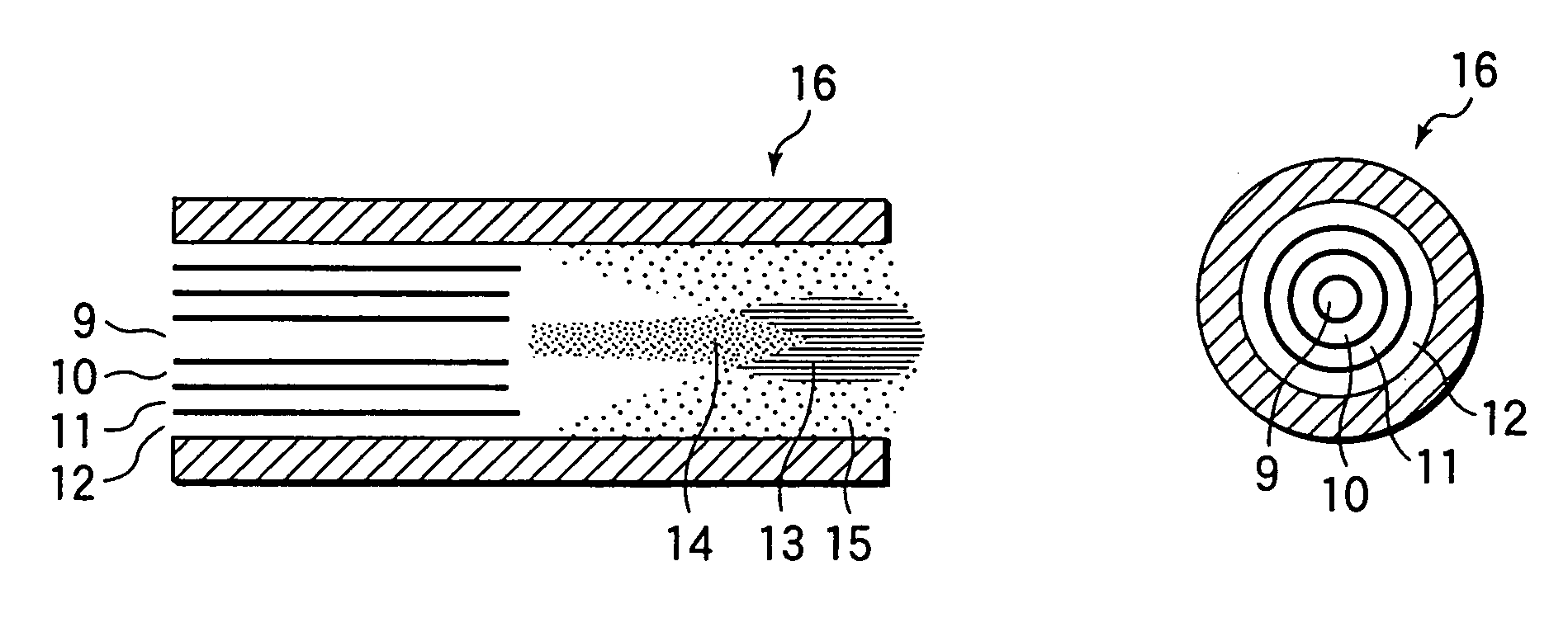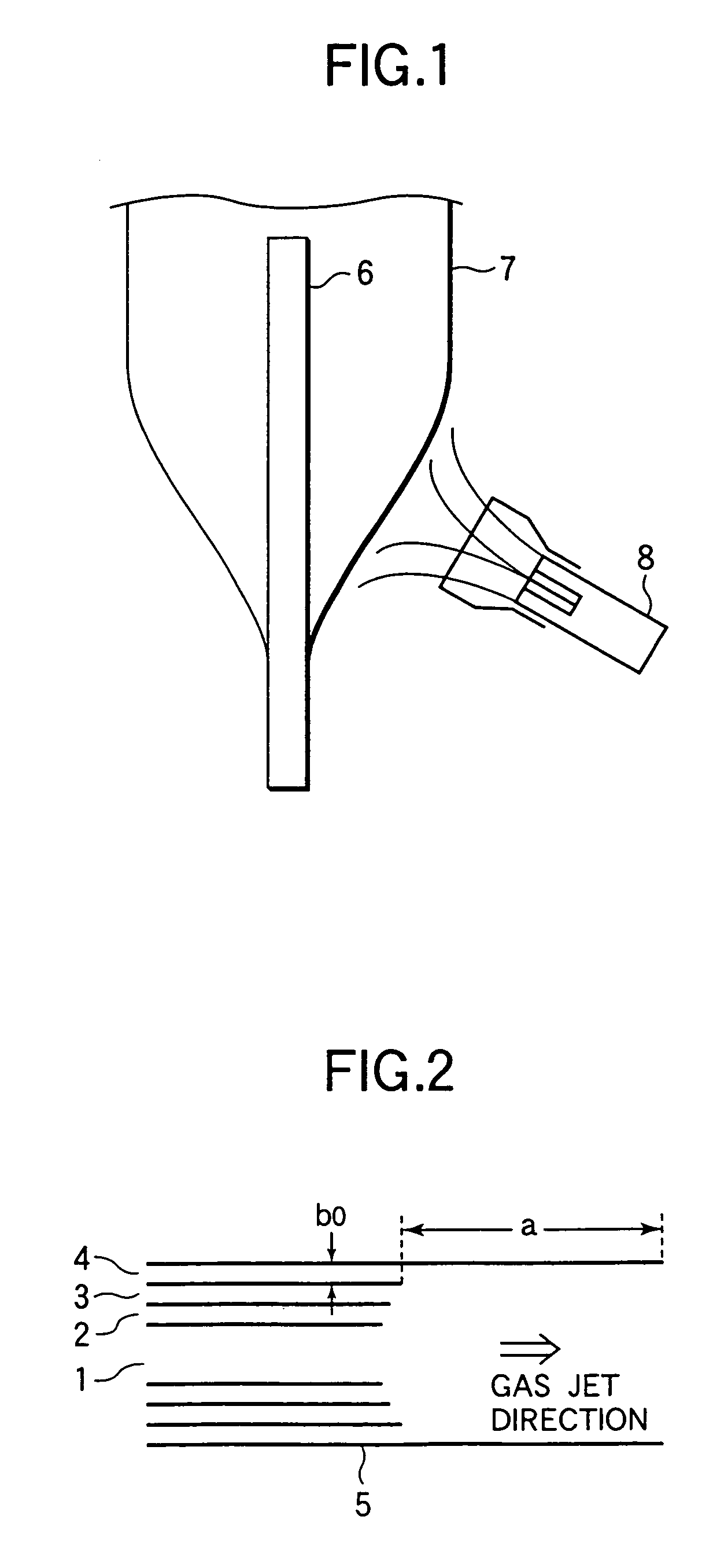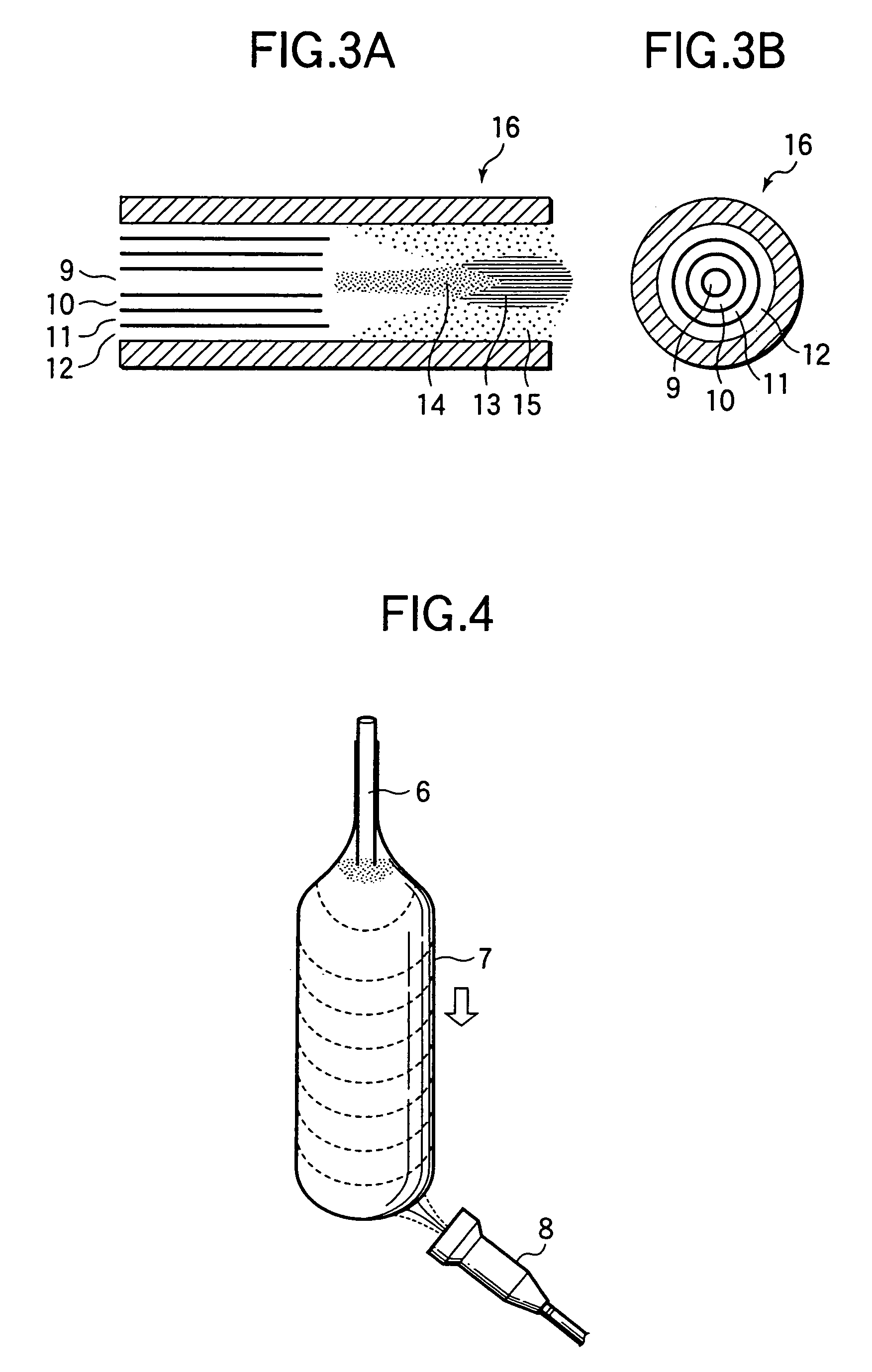Burner for synthesizing glass particles and method for producing porous glass body
a technology of synthesizing glass particles and burners, which is applied in the direction of glass deposition burners, combustion types, and lump and pulverizing fuel, etc. it can solve the problems of comparatively low raw material yield, insufficient hydrolytic reaction or oxidation reaction efficiency of raw materials to glass particles, and inability to say other things, to achieve the effect of enhancing the reaction efficiency of raw materials to glass and efficiently producing glass particles
- Summary
- Abstract
- Description
- Claims
- Application Information
AI Technical Summary
Benefits of technology
Problems solved by technology
Method used
Image
Examples
examples 1 to 6
, AND COMPARATIVE EXAMPLES 1 TO 4
[0042]As shown in FIG. 1, glass particles were synthesized by use of a burner 8 for synthesizing glass particles according to the structure of the present invention, and a porous glass body was produced by a VAD method for depositing glass particles 7 around a starting rod 6.
[0043]The burner 8 used was a concentric 16-tubular burner. A center port group 5 of the burner 8 was constituted by a first port 1 for jetting raw material gas (SiCl4) and hydrogen gas, a second port 2 for jetting hydrogen gas, a third port 3 for jetting Ar gas which was seal gas, and a fourth port 4 (corresponding to the first oxygen gas jet port in the present invention) for jetting oxygen gas, as shown in its side view of FIG. 2. Outside this center port group 5, there were provided an outside port group with three groups for forming flames in combination of (Ar / H2 / Ar / O2).
[0044]In the burner 8, as the fourth port 4 which was the first oxygen gas jet port, there were used a st...
PUM
| Property | Measurement | Unit |
|---|---|---|
| time | aaaaa | aaaaa |
| outer diameter | aaaaa | aaaaa |
| outer diameter | aaaaa | aaaaa |
Abstract
Description
Claims
Application Information
 Login to View More
Login to View More - R&D
- Intellectual Property
- Life Sciences
- Materials
- Tech Scout
- Unparalleled Data Quality
- Higher Quality Content
- 60% Fewer Hallucinations
Browse by: Latest US Patents, China's latest patents, Technical Efficacy Thesaurus, Application Domain, Technology Topic, Popular Technical Reports.
© 2025 PatSnap. All rights reserved.Legal|Privacy policy|Modern Slavery Act Transparency Statement|Sitemap|About US| Contact US: help@patsnap.com



